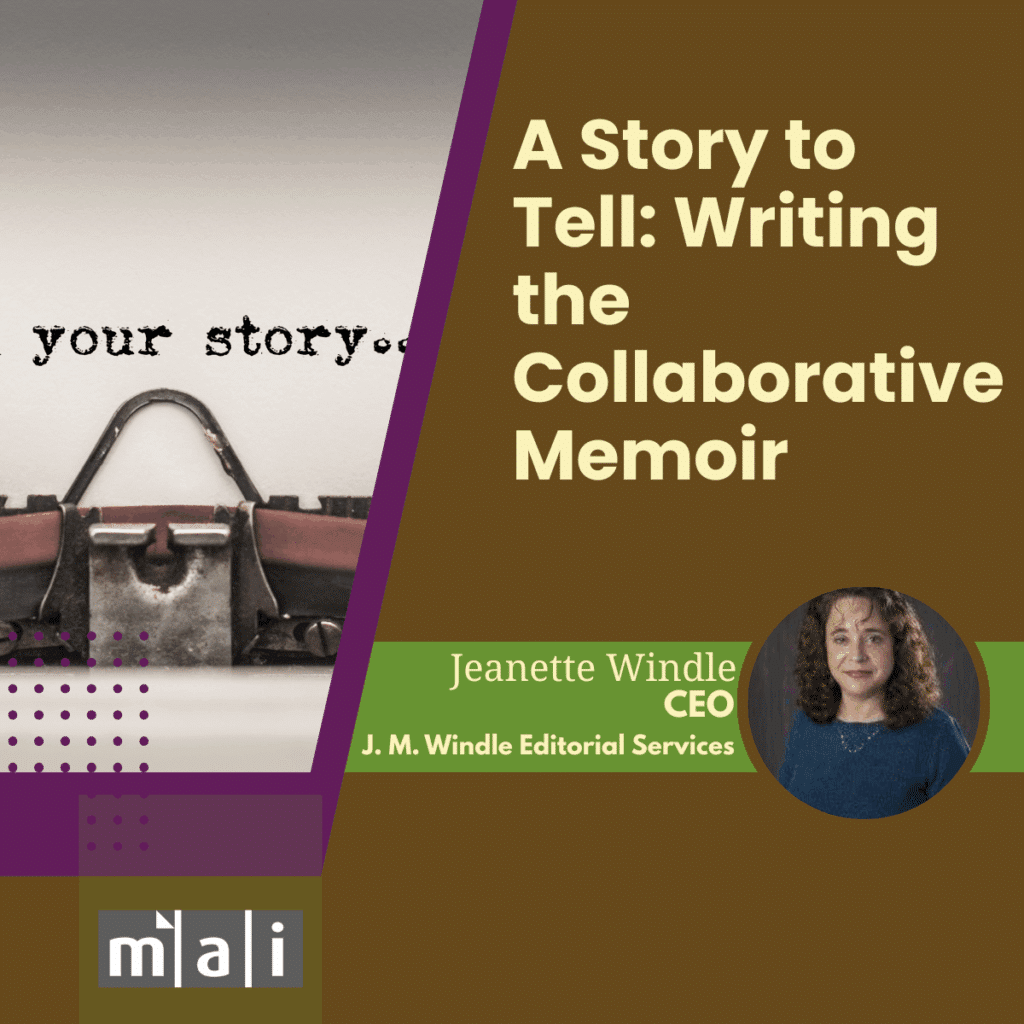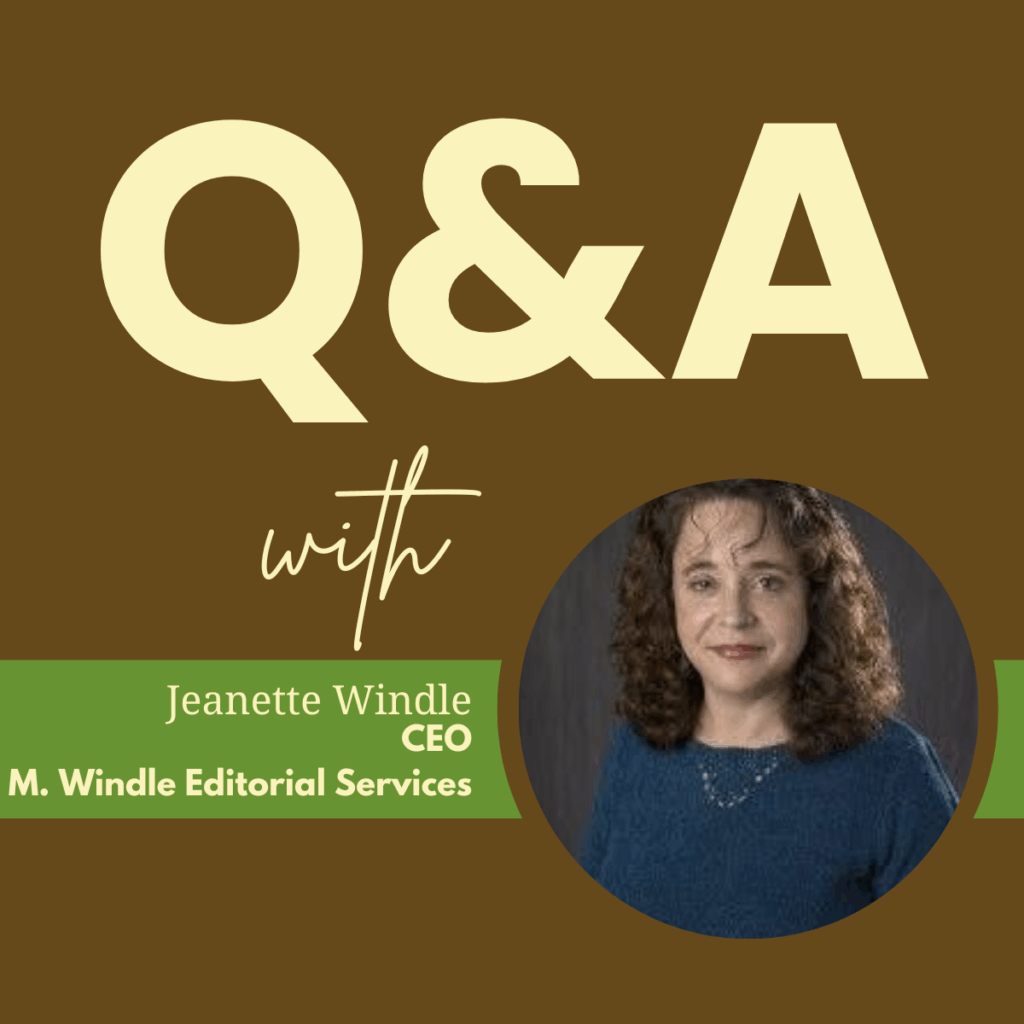From our Resource Library

A Story to Tell: Writing the Collaborative Memoir with Jeanette Windle
Learn how to write someone else’s life story—or your own.
This is an edited transcript of author Jeanette Windle’s webinar.
We’re going to be looking at a very simple but effective pattern for taking somebody else’s life story and making it both a compelling and inspirational read.
Key Ideas
- There are three main steps to writing memoir: gathering our material, then organize that material into a coherent outline, and then writing the book.
- The two types of true-life story are biography and life crisis
- The first step to gathering material is interview (primary and secondary sources), and the second is research.
- When interviewing, always block out plenty of time; do not worry about being organized or chronological; and be sure to include emotions, reactions, and spiritual applications.
- As you gather material, think of scenes, composed of the stories the person has told over and over again.
- Gather biographical and historical details connecting significant scenes by creating a thorough timeline.
- As you organize, think hook, theme, and impact.
- In the writing process, you want to show and you want to tell. Use show for key scenes and tell for the chronology and passage of time.
Edited transcript
To successfully write this type of book, there are three main steps we’re going to look at:
- Gathering our material
- Organize material into a coherent outline
- Writing the book
Step 1: Gathering the Material
There are two main steps to gathering the material for this type of book. Whether you’re interviewing yourself—if you’re writing an autobiography—or a primary subject, you’re probably also going to have secondary sources. You’re also going to be doing research.
Interviewing Techniques
I usually do 20 to 30 hours interviews for a 50,000 book. I will typically have 40,000 words of raw notes.
First, always block out plenty of time. You can’t truly get somebody to spill their heart to you if you’re in a hurry. I will tell interviewees in advance, “As you’re talking, I will routinely be interrupting. This isn’t to be rude. It’s because while you’re talking, I may think of an additional detail I need.”
If you’re interviewing yourself:
Just tell your story in as much detail as possible. It doesn’t have to be organized.
Include your emotions, your reactions, your spiritual applications, your takeaway for the reader… Don’t worry about being organized. Don’t worry about being chronological.
What to Gather: Scenes and Spiritual Points
Think scenes. If you’re watching a movie, if you’re reading a book, you’re looking at scenes. In every person’s life who has a story to tell, there will be certain stories of lives that they constantly tell. Those stories will be the key stories to telling their life story as well.
Write down the following 3 points, which will become the spiritual thread and theme of your book:
- For every single story… what were the emotional and spiritual high and low points of those events, that story, that crisis?
- And what are the things that God has taught through those events or life story or crisis?
- I will continually be probing what do you want your reader to take away?
You need to also gather the biographical and historical details connecting significant scenes. Too often the hardest part of putting this type of book together is the missing pieces. Make sure you gather all of that material and passage of time and historical data between the key scenes of the person’s story. And one way to do that is by creating a thorough timeline.
The Necessity of Research
Too often a memoir becomes somebody’s memories. The reader doesn’t know the person, doesn’t know the context. Without solid research on your part to tie it all together, it becomes something that a reader outside the personal family cannot follow. So your interview, scenes and story need to be woven together into a solid background, including historical, geographical and political setting.
When I’m writing a story like this, the first thing I’m doing when I finish my notes, if I can, is go to the place. You can also do online research.
When I was writing The Dancing from Darkness, the World War II survivor book. She was a child, so she often had no idea of the political context of the story she was telling I discovered, for example, that she managed to step across the East Berlin border just the same week that the wall went up. And if God had not opened the door for her to get out that week, she would have never gotten out.
The research allows you, like any good journalist, to put background to the interview stories that you have received.
Step 2: Organizing the Material
Now the time comes to organize that material into a book.
Finding the Hook, Theme, and Impact
Hook. What significance or draw will this particular story have to draw readers? It may be because the person is famous… Or a life crisis.
Theme. What are what is the overall message and thoughts and images that are important to this primary person?
Impact. What is the impact, the lesson, the message that this person’s life has that makes it worth putting 50,000 words in text and spending the time and effort to publish it? Everyone has a story.
Structuring the Story
Chronology. The easiest way to take your stories is to take all those key stories you’ve been told and put them into a basic chronological order.
Flashback. Weaving between the present and the past, especially if you’re telling a story that’s a life crisis or news story.
Voice and Perspective
- If you are telling one person’s story… you will probably write it in first person.
- If the story has multiple subjects and multiple timelines and people, the easiest is to write in third person.
- If you’re writing somebody else’s story, you want to bring journalistic excellence. But you also want it to be their voice and not yours.
Step 3: Writing the Book
We’ve now gathered material, we’ve organized it, and now we’re ready for the easy part: writing the book.
The Prologue
This is not the beginning of the story. The prologue is going to be your introduction or rather your subject’s introduction of themselves, the subject of the story and the purpose of writing to the reader. And there are three points you want to make sure you include in your prologue:
- Introducing the subject of the story.
- Introducing the major crisis or reason for the story.
- Introducing the theme and the hook.
Chapter One: Crisis and Drama
You want to begin at a point of crisis or drama. Whatever scene or story is so powerful in their lives that it deserves writing their story. That will be the first scene of your book. You want to come in at that point of crisis and drama.
Showing and Telling
We are often told to show, don’t tell. Here’s the reality, especially for writing a memoir. You want to show and you want to tell.
When you are telling those scenes, those stories that are told over and over that you’ve captured, you want to tell them in what we call show. Write them with the vividness as though you were writing a novel.
Then you’re going to be using the tell for that chronology. You can tell the passing of time, the chronology, what events quickly happen to move on to the next scene.
Narrative Prose
The story needs to be told with all the excitement of a bestselling novel. Use the six senses: Sight, sound, smell, taste, touch, and the most important sense for the writer is emotion.
Dialogue
Your dialogue needs to be natural. Turn the reported speech from interviews into real, authentic dialogue.
The Epilogue: Say Goodbye
Don’t leave your reader hanging without an epilogue because they need you to say goodbye to them.
Just as you need a prologue to introduce your theme, you need to, at the end, end with an epilogue. When your story ends, the story hasn’t ended. Your readers want to know where you are today.
Your story that you’re writing may have ended action-wise a dozen years earlier, but the reader needs to know where they are today.
The book also needs to come back to your opening theme, your opening image, your open hook.
You need to invite them and challenge them to move forward with their lives.

What is the Dragon Program?
It’s a voice recognition program that learns your voice (like the feature on a phone) and uploads your spoken words directly to the computer as text. It works well for solo work (autobiography) but not for interviewing multiple people.
What does “assume reader ignorance” mean?
You need to provide key details that a total stranger from another country would need to understand the story (e.g., what continent the story is set on). Your audience isn’t your family, so don’t leave out critical background context.
Is it helpful to have a spouse or family member listen during the interview?
No, it’s generally not helpful. I become the subject’s confessional, and they can be more intimate and pour out their heart when talking to just one person. Interviews should be done with one person at a time.
How many words of raw material typically translate into a final book?
I typically finish note-gathering with about 40,000 words of raw notes. The first draft often ends up around 65,000 words, but it’s easier to write a lot and trim than not have enough material.
What’s the difference between a biography and a memoir?
All biographies are technically memoirs, but not all memoirs are biographies. A biography usually covers the entire life story of a person people already care about (like Billy Graham). A memoir often focuses on particular events that make the story worth telling (like 90 Minutes in Heaven).
Do you send interview questions ahead of time for a book project?
Not typically for a book. For articles, yes, but for a book, the subject has usually told the core story already. I prefer to hear their story live and then prompt them to fill in the gaps that they usually leave out.
Have you used Skype for interviews?
Yes, but it can be stressful and often limits the intimacy needed for a book. I find it better to write out questions and discuss them on Skype, or just budget for face-to-face time with the principal subject for an entire book project.
Should negative areas of a person’s life be included?
Both the positive and negative should be included. The negative is often part of bringing the positive (e.g., coming to Christ in prison). However, the subject must approve what goes in print; it shouldn’t be “gotcha journalism.”
How do you know the person is telling the truth?
Through investigation and fact-checking. If the story involves historical events (like riots or war), you must research historical, geographical, and news records. If every detail matches the public record so clearly, that’s as far as a writer can go to confirm authenticity.
Do the methods of writing a biography apply to writing the story of a movement?
Yes. The principle is the same: collect individual stories and scenes from people involved, create a timeline/chronology from those, and then weave in all the background material of the movement to tie those exciting stories together.
About Jeanette
is an award-winning novelist, investigative journalist, editor and collaborative writer. She grew up in the Amazon’s guerrilla hot zones, has lived in six countries and traveled in over 30. She’s written 24 fiction and non-fiction titles and is CEO of J. M. Windle Editorial Services.
